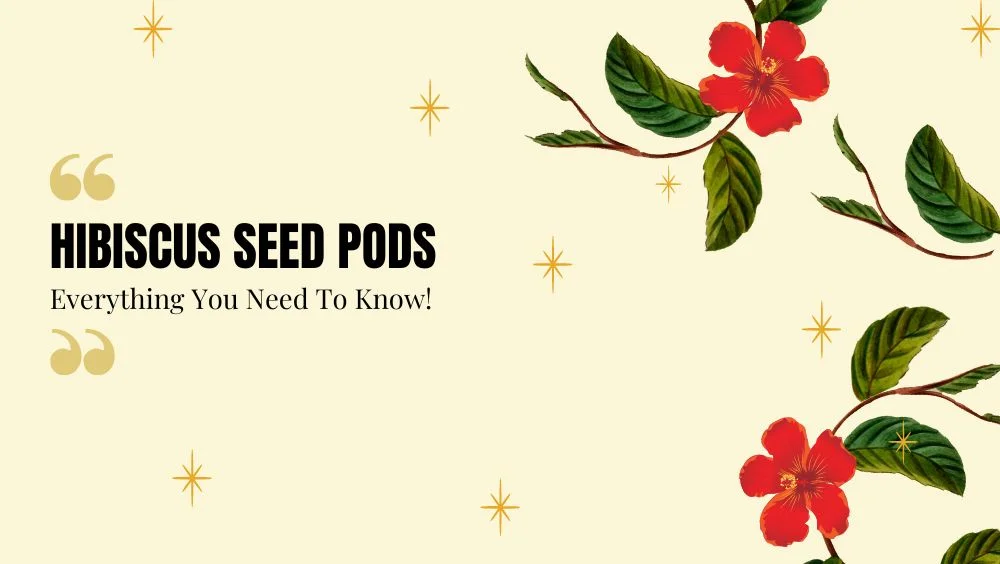
Giant flowers, vivid colors – there is a reason why Hibiscus are extremely popular among gardeners. But I have often observed that gardeners who are new to Hibiscus know little about its seed pods and often misunderstand them to be buds. This is why I am sharing this post to enlighten everyone about the seed pods of Hibiscus and how they differ from buds (along with pictures).
What Are Seed Pods On Hibiscus?
Just like any living being, plants also wither with time and eventually die. But before they perish, they make sure they have produced a lot of seeds over time, which in turn give rise to their offspring – a baby plant. Hibiscus is no different, and if nature is allowed to take its course, these plants also spread in the garden.
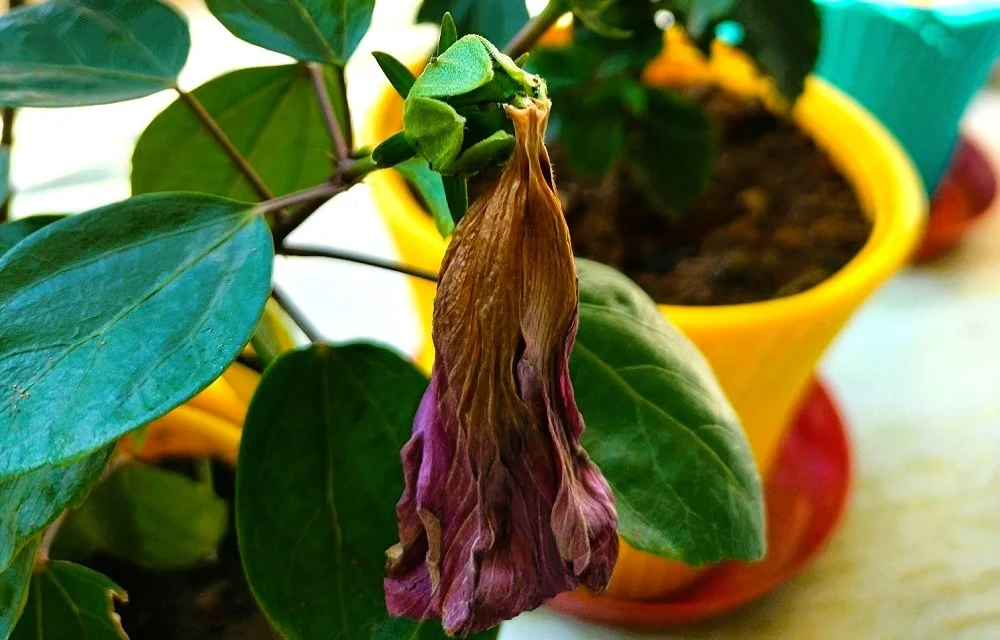
The seed pods of hibiscus plant are like any other plant seeds, produced by the mother plant after pollination (the male pollen of a flower comes into contact with the female stigma and fertilizes the ovule, initiating seed formation).
And just like the mother plant, these seeds germinate, grow, and then themselves produce seeds again. This entire process is called reproduction which allows the plant to multiply and spread further.
What Does A Hibiscus Seed Pod Look Like?
The large, capsule-shaped formations on the stem that resemble hibiscus buds are actually seed pods. You may not have noticed them because they form just below the large hibiscus flowers and look like just another bud of the plant (when they are small).
These pods usually stay on the plant for about a month, even after the flower has wilted and fallen off, and turn brown when they are fully mature. This woody, brownish colored pod can then be opened to release brown seeds with a yellowish, hairy fringe.
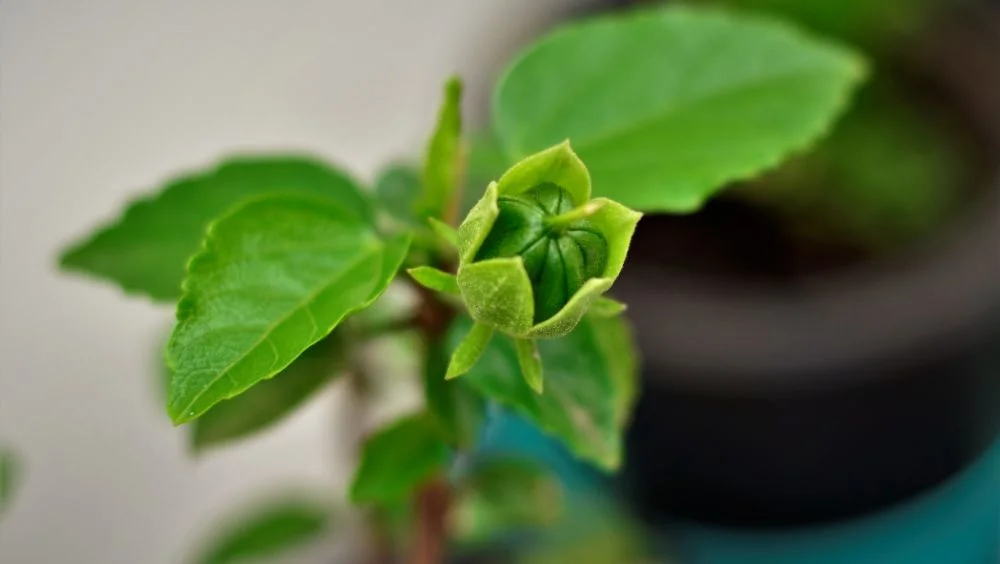
Hibiscus seeds contains three important parts. The most important part is the seedling from which small roots and a stalk grows upon potting in the soil. The second part is the endosperm, where nutrients are stored for the seedling. The third part is the seed coat, which protects the endosperm and the seedling from fungi and pests.
Difference Between Hibiscus Buds And Seed Pods
It is fairly easy to determine whether you are looking at Hibiscus seed pod or its bud. The first thing you should pay attention to is the size. Seed pods of hibiscus have a slightly oval shape, unlike buds, which are long and pointed. And in most cases, part of the flower remains attached to the tip of the seed pod, indicating that it has wilted and fallen off.
Flower buds, on the other hand, are either very small if they have just developed, or show visible signs of blooming (part of the flower protrudes from it, see image).
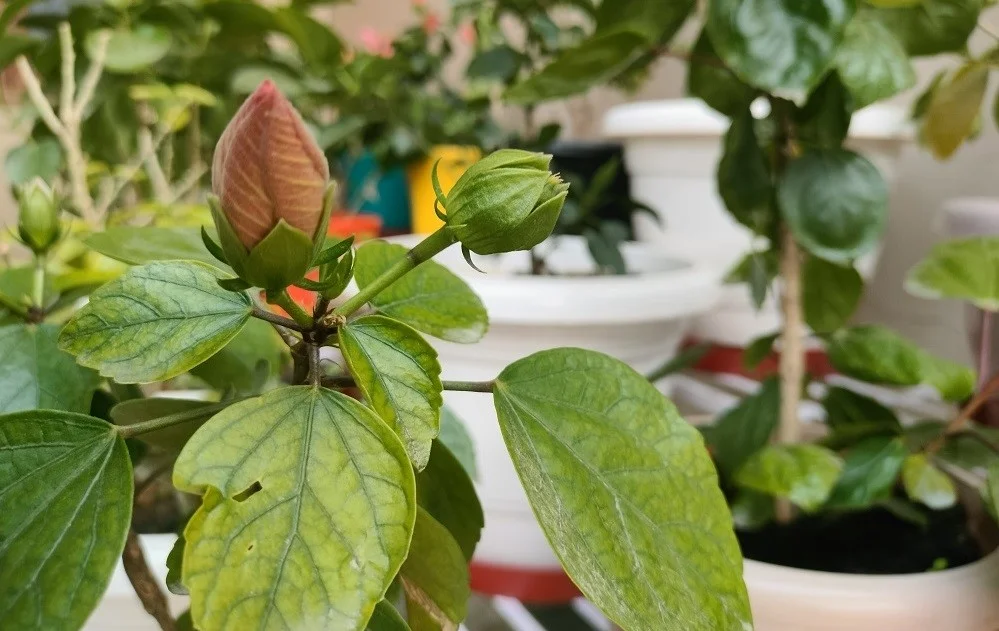
Other than that, flower buds exhibit much the same color as any new shoots that develop on your plant. The seed pods, on the other hand, are slightly paler, depending on their maturity.
Many newbies do not realize that there is a seed pod developing right below the hibiscus flower!
In case you are pruning off seed pods from your Hibiscus and are slightly unsure what it is, its best to wait for a couple of days. A matured bud will open up slightly indicating its excitement to bloom.
How Many Seeds Are In A Hibiscus Pod?
There is no fixed number when it comes to the quantity of seeds coming out of seed pods. Depending on the growth of the plant and its variety, the number can reach up to 40.
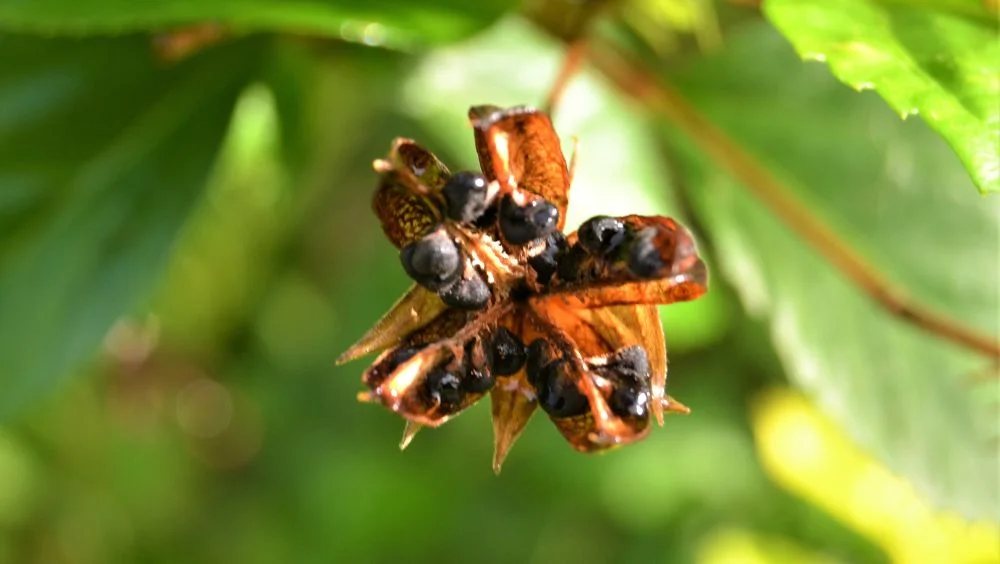
But if your seed pod contains only 15 seeds, it does not necessarily imply that there is something wrong with your plant. Nor does it mean that the same plant will produce the same number of seeds the next time it forms a pod. In short, the number of seeds you can get from a single hibiscus pod can range from anywhere between 10 and 40.
What Are Hibiscus Seed Pods Used For?
If you want to propagate hibiscus through seeds then these pods come in quite handy. You just need to store these seed pods collected from the plant and wait until the end of winter frost. Thereafter, you can sow these seeds directly into your garden bed or in planters.
Depending on the variety, your hibiscus will bloom with its first flower after a couple of years. The dwarf varieties of Hibiscus are also propagated in this way – but they bloom much sooner.
In addition to propagation, these dried seed pods of hibiscus have a variety of other uses as well. While hibiscus flowers are often used to make herbal tea, the seeds are used to flavor beverages. Plus, the oil extracted from these seeds is used as a substitute of castor oil.
When Should You Remove Seed Pods From Hibiscus?
Keep an eye on the seed pods as soon as you see them developing. Most seed pods are green at first, even if the flower above them wilts and falls off.
However, you will have to wait until they turn brown and begin to crack before you can harvest them. This is because seeds take a long time to mature and will not germinate if they are plucked too early. If you want good quality seeds, you need to let them age on the plant itself.
And when they are dried (exhibiting a crunchy brown color), you can simply pluck them off from the stem and store them in a paper bag. The advantage of using a paper bag for storage is that it allows evaporation to take place and thus prevents any risk of mold formation.
After a couple of weeks, shake the bag so that all the seeds automatically come out of the pod.
How Long Does It Take For A Hibiscus Seed Pod To Grow?
People always wonder as to when they can harvest their Hibiscus seed pods in order to germinate a new baby plant. To tell you the truth, there is no specific time frame as it totally depends on the environment in which the plant is growing.
Normally, in summers, Hibiscus seed pods mature within a month. However, in humid conditions or in winters, the same plant takes much longer to produce a ripe pod.
During winters, I have particularly observed that seed pods usually fall off before they are ripe. This is due to the harsh weather conditions and in some cases, overwatering. However, the same plant produces very good seeds throughout summers and takes about 35-45 days to develop a fully matured pod.
How Do You Remove Hibiscus Seed Pods?
Hibiscus seed pods turn pale yellow or brown, indicating the need of harvesting. They can either be collected by pruning the entire stem if no other flowers or leaves are present or they can be plucked off individually with your hands.
Once you have removed these pods, you will need to wait several more weeks before opening them. A matured pod will make a crunching sound indicating its dryness. You can then crush them with your hands or shake them in a plastic container. Thereafter, you can store them in a moisture-free environment, preferably in a paper bag, or sow them straight into the soil.
On the other hand, if you don’t want your hibiscus to produce as many seed pods and instead want it to focus on blooms, you can remove the seed pods completely just like you remove wilted flowers from hibiscus.
Final Note
The primary purpose of today’s article was to let my readers know that Hibiscus does indeed produces seeds, and that these seeds are located right under the blooms!
I sincerely hope that next time you will be able to distinguish between these seed pods and the developing buds around your plant.
Have fun gardening!

